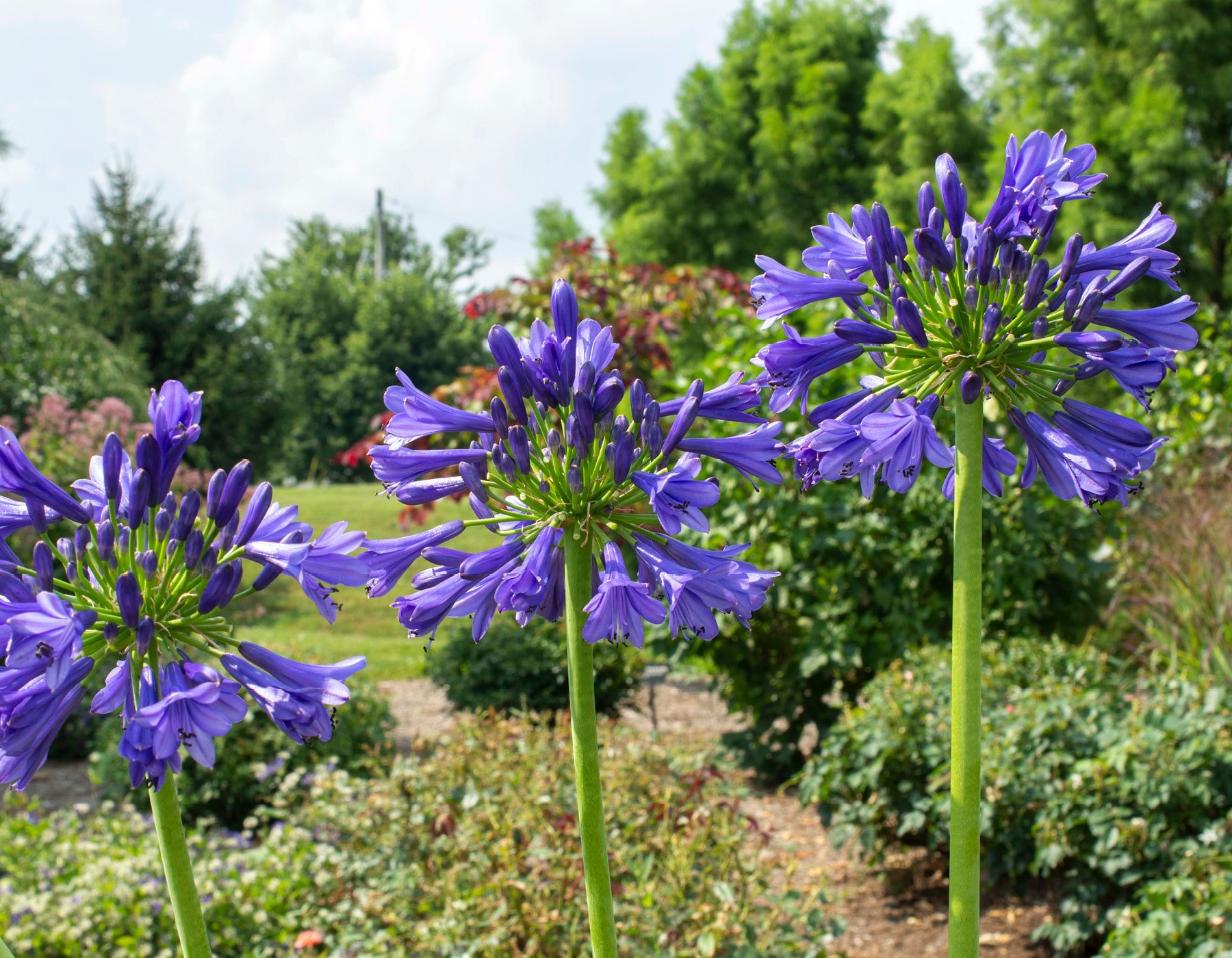Agapanthus Expanding Problems: Soil, Sunshine, and Watering
Agapanthus Expanding Problems: Soil, Sunshine, and Watering
Blog Article
Mastering the Art of Agapanthus Care: Important Steps for Healthy And Balanced Growth and Vivid Flowers
In the world of cultivation, the farming of agapanthus stands as a gratifying endeavor for those that seek to support these elegant flowering plants. With their striking blossoms and elegant vegetation, agapanthus has recorded the focus of garden enthusiasts worldwide. However, achieving ideal development and lively blossoms needs a nuanced approach that includes various important steps. From choosing the right range to grasping pruning strategies, the trip towards cultivating thriving agapanthus plants is diverse and holds the crucial to unlocking the full capacity of these botanical treasures.

Choosing the Right Agapanthus Variety

When selecting the appropriate Agapanthus range for your garden, think about variables such as environment suitability, blossom shade, and growth habit. Agapanthus, generally called Lily of the Nile or African lily, is available in a selection of colors varying from shades of blue and purple to white. Select a flower shade that matches your existing garden scheme to develop an unified landscape. Additionally, take into consideration the environment in your region to ensure the Agapanthus selection you choose can thrive in your certain conditions. Some varieties are much more tolerant of cool temperatures, while others prefer warmer environments. Recognizing the growth habit of different Agapanthus ranges is essential for proper positioning within your yard. Some ranges have a clumping development routine, ideal for borders or containers, while others have an even more dispersing nature, appropriate for ground cover or mass growings. By meticulously evaluating these elements, you can pick the excellent Agapanthus variety to boost the elegance of your garden.
Ideal Planting Conditions
Considering the optimal environmental demands is vital for successful Agapanthus growing. Agapanthus prospers in well-draining dirt with a slightly acidic to neutral pH degree. When growing, select a place that receives full sunshine to partial shade. In hotter climates, supplying some mid-day shade can stop scorching of the leaves. Agapanthus plants are sensitive to cool temperature levels and ought to be shielded from frost during wintertime months.
To guarantee healthy and balanced development and vibrant flowers, plant Agapanthus bulbs at a depth of concerning 2-4 inches and area them 8-12 inches apart. Mulching around the base of the plants assists maintain dampness and suppresses weed growth.
Watering and Feeding Tips
Keeping correct wetness degrees and giving crucial nutrients are essential elements in the treatment program for Agapanthus plants. When it comes to sprinkling Agapanthus, it is vital to strike an equilibrium. These plants favor regularly moist dirt yet are at risk to root rot if overwatered.
Feeding Agapanthus is vital for advertising healthy and balanced development and respected blooms. Use a well balanced fertilizer, such as a 10-10-10 formula, in the very early springtime as new development arises. By adhering to these watering and fertilizing ideas, you can guarantee your Agapanthus plants grow and produce vivid, durable blossoms.
Trimming Strategies for Agapanthus
Trimming Agapanthus plants at the proper times and with appropriate techniques is important for weblink keeping their health and wellness and advertising optimal development and blooming. The ideal time to prune Agapanthus is in late wintertime or very early springtime prior to brand-new development arises.
For flowered stems, wait until the blossoms have actually withered and afterwards cut them back to the base. This not only tidies up the plant's look however additionally urges the growth of brand-new blossom buds. Deadheading spent blossoms can additionally reroute the plant's energy right into creating more blooms instead than setting seeds. Nonetheless, if you wish to gather seeds for propagation, leave some blossoms to mature and completely dry on the plant.
Bear in mind to use clean, sharp devices to make precise cuts and decrease the threat of introducing diseases. Agapanthus. Routine pruning will certainly assist maintain your Agapanthus looking healthy and cool while guaranteeing a plentiful display of gorgeous flowers
Taking Care Of Usual Pests and Diseases
After guaranteeing correct pruning techniques for Agapanthus, it is crucial to attend to common parasites and diseases that can impact the health and vitality of these plants. One usual parasite that impacts Agapanthus is the Agapanthus gall midget.
Another typical problem is fungal fallen leave spot, which offers as dark sores on the leaves. To stop fungal diseases, Visit This Link guarantee good air circulation around the plants, stay clear of overhead watering, and remove any type of contaminated fallen leaves without delay. Furthermore, Agapanthus plants can deal with root rot if they are grown in improperly draining dirt. To prevent this, plant Agapanthus in well-draining dirt and prevent overwatering. By being watchful and taking timely action against conditions and insects, you can assist your Agapanthus plants thrive and generate dynamic flowers.

Conclusion
In conclusion, grasping the art of agapanthus treatment entails selecting the appropriate range, offering excellent growing see here now problems, appropriate watering and fertilizing, suitable trimming techniques, and attending to usual parasites and conditions. By complying with these essential actions, you can make sure healthy and balanced growth and vivid blossoms for your agapanthus plants. Bear in mind to consistently keep track of and keep your plants to advertise their overall wellness and longevity.
To make certain healthy and balanced development and dynamic flowers, plant Agapanthus light bulbs at a deepness of concerning 2-4 inches and space them 8-12 inches apart. By adhering to these watering and feeding ideas, you can ensure your Agapanthus plants flourish and generate vivid, lasting blossoms.
One typical parasite that impacts Agapanthus is the Agapanthus gall midget. Additionally, Agapanthus plants can experience from origin rot if they are grown in improperly draining soil. By complying with these vital actions, you can make sure healthy and balanced development and lively flowers for your agapanthus plants.
Report this page